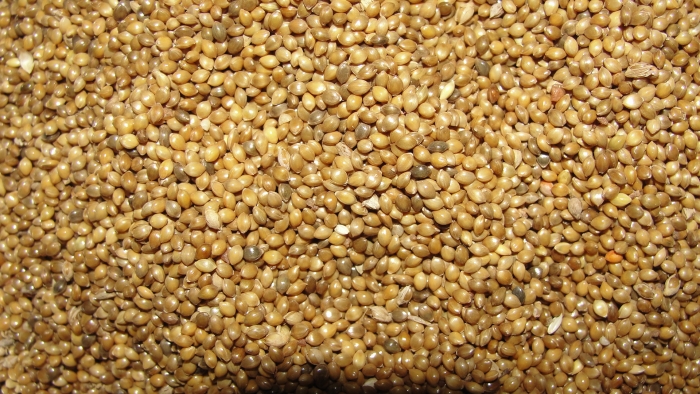Little Millet
(Panicum sumatrense)
Little Millet (Panicum sumatrense)
/
/

Thamizhpparithi Maari
CC BY-SA 3.0
Image By:
Thamizhpparithi Maari
Recorded By:
Copyright:
CC BY-SA 3.0
Copyright Notice:
Photo by: Thamizhpparithi Maari | License Type: CC BY-SA 3.0 | License URL: https://creativecommons.org/licenses/by-sa/3.0 | Uploader: Thamizhpparithi Maari | Publisher: Wikimedia Commons | Title: A_closeup_fo_Samai_millet_with_husk.JPG |


Estimated Native Range
Summary
Panicum sumatrense, commonly known as Little Millet, is an annual grass native to the tropical regions of India. It typically grows straight or with folded blades and reaches a height of 30 centimeters (12 inches) to 1 meter (39 inches). Little Millet is adapted to a wide range of ecological conditions, often found in open areas where it can receive full sunlight. It is a highly versatile crop that can be grown in various soil types, from well-drained to waterlogged soils, and is known for its ability to withstand both drought and excessive moisture.
Little Millet is valued for its rapid growth and adaptability to diverse growing conditions, making it a reliable grain crop in arid and semi-arid regions. It is primarily cultivated for its small, round, edible seeds, which are a staple food in many parts of India. The seeds are rich in nutrients and are used in a variety of culinary applications. In cultivation, it requires full sun exposure and can tolerate a range of water conditions. It is often sown using a seed drill, but broadcasting is also a common practice. Little Millet can be cultivated up to an altitude of 2000 meters above sea level.CC BY-SA 4.0
Little Millet is valued for its rapid growth and adaptability to diverse growing conditions, making it a reliable grain crop in arid and semi-arid regions. It is primarily cultivated for its small, round, edible seeds, which are a staple food in many parts of India. The seeds are rich in nutrients and are used in a variety of culinary applications. In cultivation, it requires full sun exposure and can tolerate a range of water conditions. It is often sown using a seed drill, but broadcasting is also a common practice. Little Millet can be cultivated up to an altitude of 2000 meters above sea level.CC BY-SA 4.0
Plant Description
- Plant Type: Grass
- Height: 4-6 feet
- Width: 2-3 feet
- Growth Rate: Rapid
- Flower Color: N/A
- Flowering Season: Summer
- Leaf Retention: Deciduous
Growth Requirements
- Sun: Full Sun
- Water: Medium
- Drainage: Fast, Medium, Slow
Common Uses
Bird Garden, Butterfly Garden, Deer Resistant, Drought Tolerant, Low Maintenance, Rabbit Resistant
Natural Habitat
Native to tropical regions of India and adapted to open areas with full sunlight
Other Names
Common Names: Sumatra-Hirse
Scientific Names: Panicum sumatrense
GBIF Accepted Name: Panicum sumatrense Roth ex Roem. & Schult.